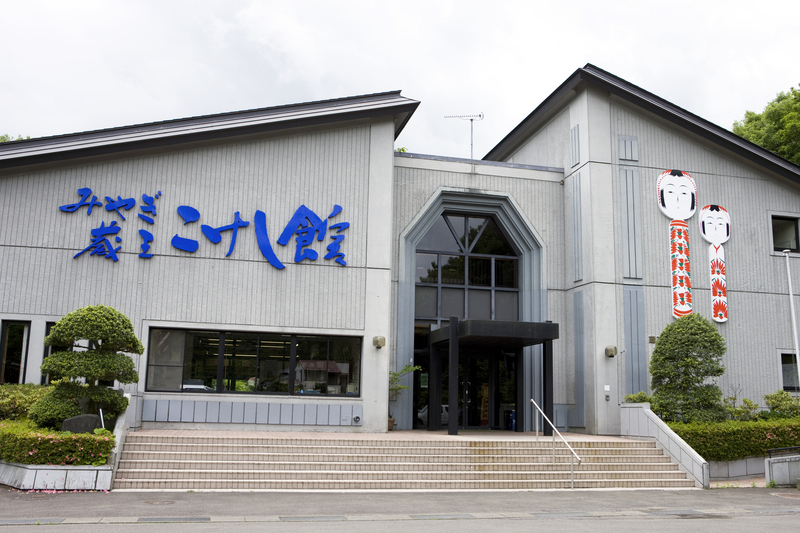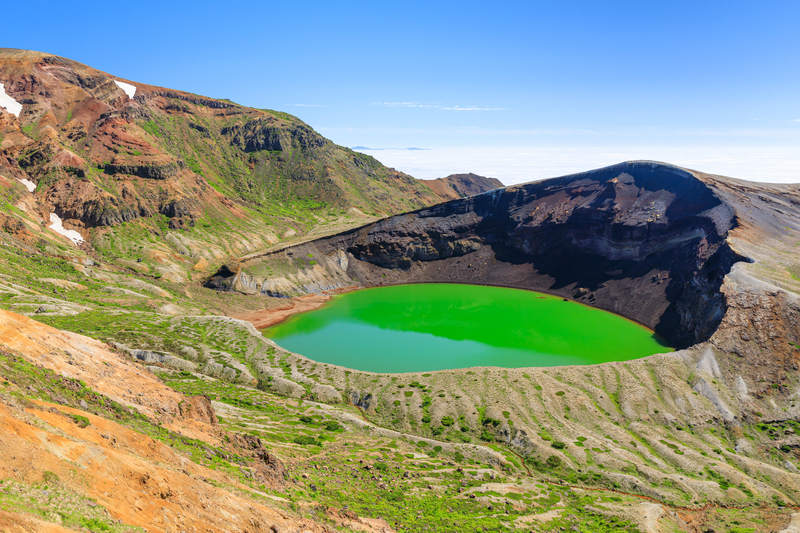Togatta Onsen
An onsen town preserving the tradition of cute kokeshi dolls

At the foot of Mount Zao on the border between Miyagi Prefecture and Yamagata Prefecture, Togatta Onsen is located in the plateau area at 330 meters of elevation. The founding of the onsen is considered to be in the year 1601, about 420 years ago, but some say that it was opened far before that by a merchant called Kaneuri Kichiji. Since the Edo period (1603-1868), the area has prospered as a lodging town for climbing to Zao Gongen (current Kattamine-jinja Shrine) as well as a spa town.
The hot spring water at Togatta Onsen contains sodium, calcium, sulfates, and chlorides, said to be effective for nerve pain, muscle pain, and joint pain. The onsen with its brownish-red water of a relatively higher temperature is characterized by effectively preventing a cold feeling after taking a bath. The town has more than 10 ryokan (traditional Japanese hotels) of various kinds, from ones with a homey atmosphere to long-established high-class hotels, along with two public bath facilities, “Kami no Yu” and “Kotobuki no Yu.” Located at the center of the town, “Kami no Yu” provides a place of rest and relaxation, with a tourist information center and a footbath facility. “Kotobuki no Yu” is a replica of a bathhouse of the Edo period, which was created by traditional architectural craftsmen. You can feel the atmosphere of that bygone era in the building.

Togatta Onsen is probably most known for kokeshi – handmade wooden dolls. Togatta Kokeshi, a good-luck charm for the healthy growth of children, is characterized by a petal pattern with red radiating lines and torso patterns with various flower motifs. It is a popular souvenir for spa customers. There is a bridge called “Kokeshi-bashi” on the Matsukawa River that runs through Zao Town, as well as Kokeshi workshops and Kokeshi Museum, with a large collection of kokeshi dolls.

In the nearby area there is the crater lake “Okama,” which is a symbol of Zao. Surrounded by rugged crater walls created by a series of eruptions, the lake has various colors on the surface depending on the angle and strength of sunlight, including emerald green and turquoise blue; thus the lake is also called “Goshiki-numa,” which literally means “five-colored pond.” Legend has it that the hot spring water started gushing out when a piece of the tail of a huge eel of Fudo-taki Falls, which was cut off when it lost a fight with a huge crab of Sankai-taki Falls, arrived at Togatta. From Takimidai observatory in the middle of the Zao Echo Line, a road to Okama, you can see three falls, “Fudo-taki,” “Jizo-taki,” and “Sankai-taki.”

If you want to see and experience various aspects of the attractive Tohoku region, the Togatta Onsen area, which has great onsen, mountain wilderness, and artless kokeshi dolls, is the perfect place for you!
| Area |
|
| Access | Tokyo Sta. -> 100 min by Tohoku Shinkansen -> Shiroishi-Zao Sta. -> 50 min by Miyagi Kotsu bus -> Togatta Onsen |
| Phone | Togatta Onsen Ryokan Hotel Kumiai (Cooperative)
TEL:0224-34-3161(バーデン家壮鳳) |
| URL | http://togatta.jp/ |
※ The information herein is as of June 2021






